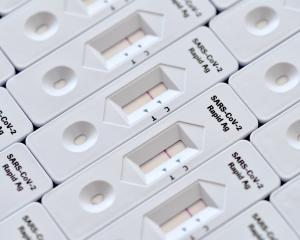
The Treasury predicts gross domestic product shrank by almost quarter in the three months ending June 30 as the national lockdown and subsequent restrictions halted activity.
That slump is expected to see annual average GDP shrink 4.6 percent in the June year, before expanding 0.6 percent in 2021 and a more rapid bounceback of 9.3 percent in 2022, largely making up lost ground through the once-in-a-century economic shock caused by the Covid-19 pandemic.
The Treasury's forecasts remain uncertain and risks are skewed to the downside. The initial base case assumed a smaller government Covid-19 response and recovery fund, which would have seen two years of economic contraction.
Households will be hit hardest this year, with unemployment seen peaking at 9.8 percent under both its main scenario and the scenario including the full $50 billion recovery fund. Unemployment is seen rising to 8.3 percent in the June 2020 year from its 4.2 percent, with 297,000 people seen on the jobseeker benefit.
That's projected to fall to 6.3 percent in 2021, with 246,000 on jobseeker benefits, and back to 4.2 percent in 2022, with 202,000 people claiming jobseeker benefits.
Jobs saved
Finance Minister Grant Robertson said he believes today's Budget announcements will save 140,000 jobs, something that's been a key focus since it rolled out its wage subsidy programme to 1.7 million people in response to the Covid-19 pandemic.
He said the forecasts were an art rather than a science, and that he was sure it will change over time.
"It is almost impossible at the moment to forecast with accuracy," he said.
Inflation is expected to remain muted throughout the forecast horizon, with the consumers price index seen rising at a 1.3 percent annual pace in June 2020, slowing to a 0.8 percent pace next year before rising to 1.6 percent in 2022.
The Budget Economic Outlook and Fiscal Update said that households' disposable incomes are expected to increase with higher unemployment, and while most will be able to weather the storm, people with high debt levels may struggle to meet their obligations.
The Treasury said it expects spending on recreation and culture, and at restaurants and hotels to be particularly distressed in the near term.
The forecasts predict the current account deficit peaking at 6.6 per cent of GDP in the 2021 year from a 2 per cent deficit in 2020. That's projected to fall back to 4.2 per cent by 2024. The current account is wider under the bigger recovery fund than the Treasury's initial forecast.
Budget at a glance:
The big-ticket items of today's budget include:
- A $3.2 billion extension of the wage subsidy scheme
- A $1.2 billion railway package
- A $3 billion infrastructure investment package
- A $1.6 billion trades and training scheme
- A $220 million expansion of the school lunches initiative
- A $400 million targeted tourism support fund
- A $830 million disability support package













